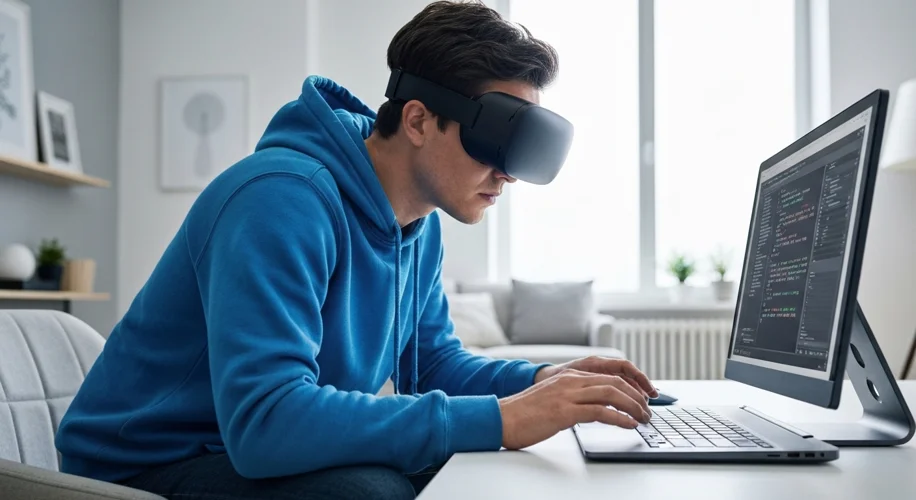Hey everyone! So, you’ve got a Quest headset and you’re ready to dive into the wild world of PC VR. Maybe you’re eyeing something intense like DCS World, or just want that crisp, high-fidelity experience. The key to making it all smooth sailing? Your network. Seriously, it’s the backbone of wireless PC VR, and if it’s not dialed in, you’re gonna have a bad time. Let’s fix that.
The Wi-Fi Whisperer: Optimizing Your Router
First things first, let’s talk about your router. For the best PC VR experience, you really want to be using the 5GHz band. It’s faster and has less interference than 2.4GHz. Make sure your Quest is connected to this band. If your router broadcasts both bands with the same name (SSID), you might want to give them different names so you can be sure which one you’re connecting to.
Also, try to minimize the distance between your PC, your router, and your headset. The closer you are, the stronger and more stable the signal. If you’re struggling with connection drops, consider switching to a Wi-Fi channel that isn’t as crowded. Many routers have a setting to auto-select the best channel, or you can manually pick one that looks clear.
Direct Connection is King: Ethernet for Your PC
Your PC should absolutely be connected to your router via an Ethernet cable. No ifs, ands, or buts. Wi-Fi for your PC connection to the router is just going to introduce unnecessary latency and potential hiccups. Ethernet is stable, fast, and reliable – exactly what you need for sending that high-bandwidth VR data.
Virtual Desktop Settings: The Nitty-Gritty
Now, let’s jump into the Virtual Desktop app itself. When you’re configuring it, you’ll see a bunch of settings. For performance, you’ll want to experiment with the video bitrate. Higher bitrates mean better visual quality, but they also demand more from your network and PC. If you’re experiencing stuttering or visual artifacts, try lowering the bitrate. Conversely, if you have a super-beefy PC and a killer network, you can push it higher for even sharper visuals.
Also, check the encoder settings. Hardware encoding (like NVENC for NVIDIA or VCE for AMD) is usually your best bet for performance, as it offloads the work from your CPU. Make sure you’ve selected the appropriate encoder for your graphics card in Virtual Desktop’s settings.
Troubleshooting Common Woes
Lag and Stuttering: This is usually a network issue. Double-check that your PC is wired, your Quest is on 5GHz, and you’re not too far from the router. Lowering the bitrate in Virtual Desktop is a common fix.
Connection Drops: Again, network stability is key. Try a different Wi-Fi channel, ensure your router’s firmware is up to date, and maybe even consider a dedicated router for your VR setup if your current one is struggling.
Blurry or Artifacty Images: This often points to either a low bitrate or an overloaded GPU. Try increasing the bitrate if your system can handle it, or conversely, lower it if you’re seeing compression artifacts. Ensure your PC’s graphics drivers are updated too.
Audio Sync Issues: This can sometimes be related to latency. Ensuring your network is optimized should help. Sometimes a simple restart of Virtual Desktop or your headset can resolve temporary sync problems.
The Takeaway
Getting PC VR running smoothly with your Quest via Virtual Desktop is totally achievable. It’s mostly about understanding your network and tweaking a few settings. Start with the basics: wired PC, 5GHz Wi-Fi, and proximity to your router. Then, dive into Virtual Desktop’s settings and find that sweet spot between visual quality and performance. It might take a little trial and error, but that seamless, immersive experience is totally worth it. Happy VRing!

